Nottingham University Hospitals Move Supplies Using New Trolley Tugs
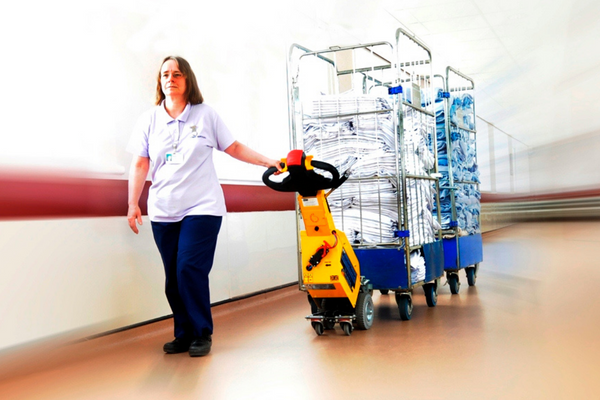
Compact, electric-operated tugs are providing benefits to hospitals, enabling staff to manoeuvre roll cages quickly and safely through the premises, improving productivity and reducing accidents.
The Application
“The health and safety of staff and visitors within the hospital premises has definitely improved after investing in the tugs,” says David Argyle, Logistics Coordinator at Nottingham University Hospitals NHS Trust. He continues: “Using the tug, a single member of staff can now manoeuvre up to four roll cages at a time. Cages can now be transferred direct from the back of a van or lorry to the required destination within the hospital, quickly and safely, without requiring any additional equipment or tools.”
Nottingham University Hospitals NHS Trust invested in five SmartMover electric tugs from MasterMover. According to David Argyle, who sourced the machines, the safety and welfare of hospital staff has significantly improved during this period. “Staff at many hospitals still struggle to move roll cages from the lorry outside to the hospital ward or storage area. The machine is either too bulky or puts too much strain on the individual using it. To make matters worse, often the user cannot see in front of the roll cage they are pushing, which, as you can imagine, is a potential safety problem in hospital corridors or elevators, where other staff and visitors are present. At Nottingham University Hospitals, we realised we needed something safer, more compact and easier for our health estate team to use.”
The Solution
The SmartMover range is made up of versatile machines designed for moving roll cages from vehicle tail lifts and across uneven surfaces, up and down slopes and machines can turn through 90 degrees. By clamping to the base of the roll cage, the unit ensures that the cage cannot be tipped onto the operator. This reduces serious injury to employees and makes unloading a single-person procedure. Efficiency and safety are further improved by allowing the movement of multiple roll cages using the towing link bars.
Nottingham University Hospitals is split into four areas: North, South, East and West, with each health estate team using one tug, with another ‘floating’ or spare machine. The machines are used primarily to unload roll cages from transit vans and lorries. The cages consist of all kinds of hospital supplies, including cleaning equipment, boxes of food and drink products, toiletries and laundry. The electric tugs are used to transfer supplies to four main areas of the hospital: H Block, North, South and maternity corridors.
Electric Tugs in Action: Healthcare
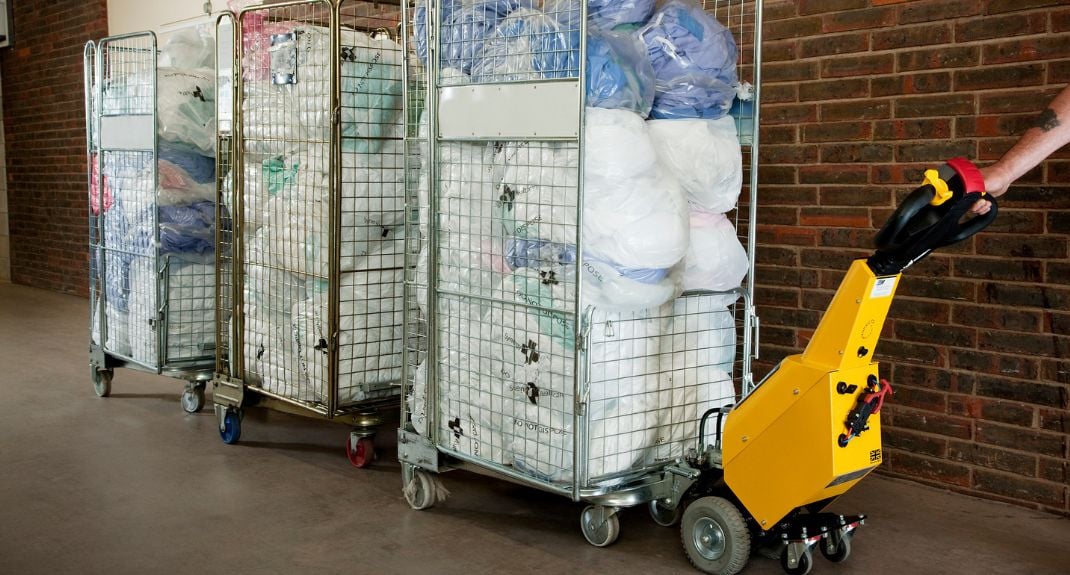
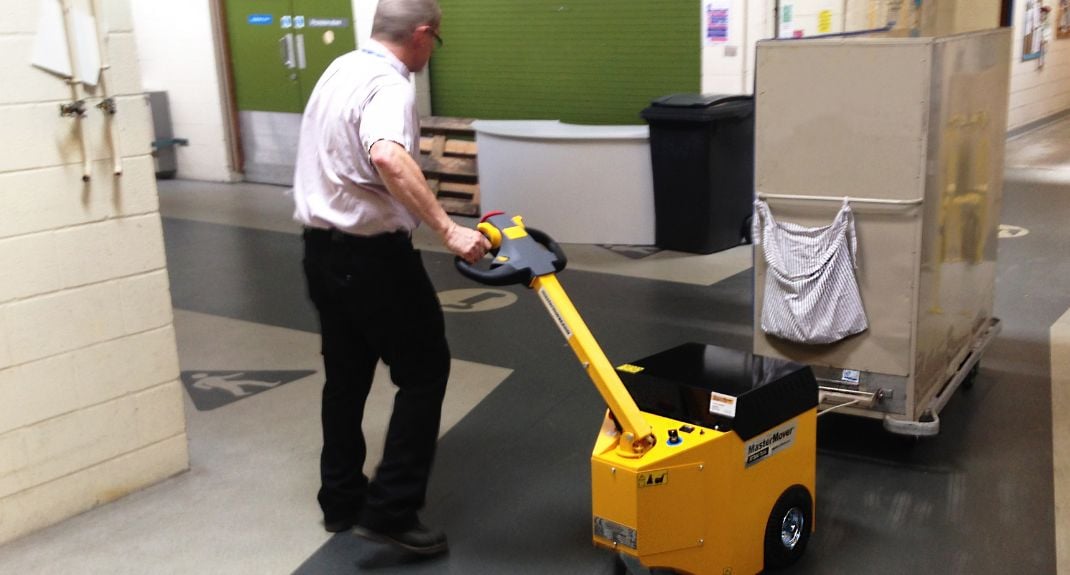
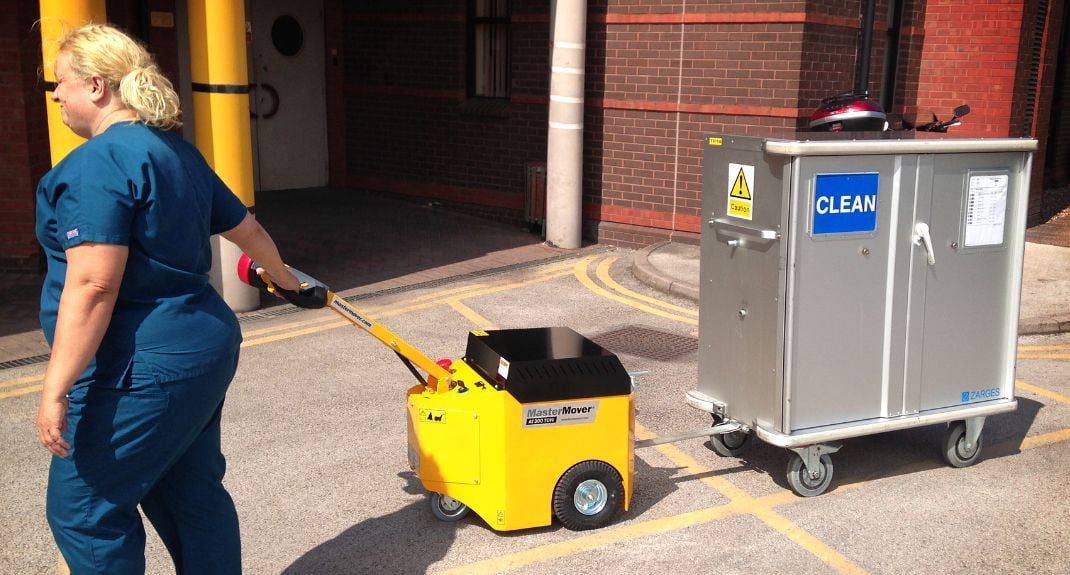
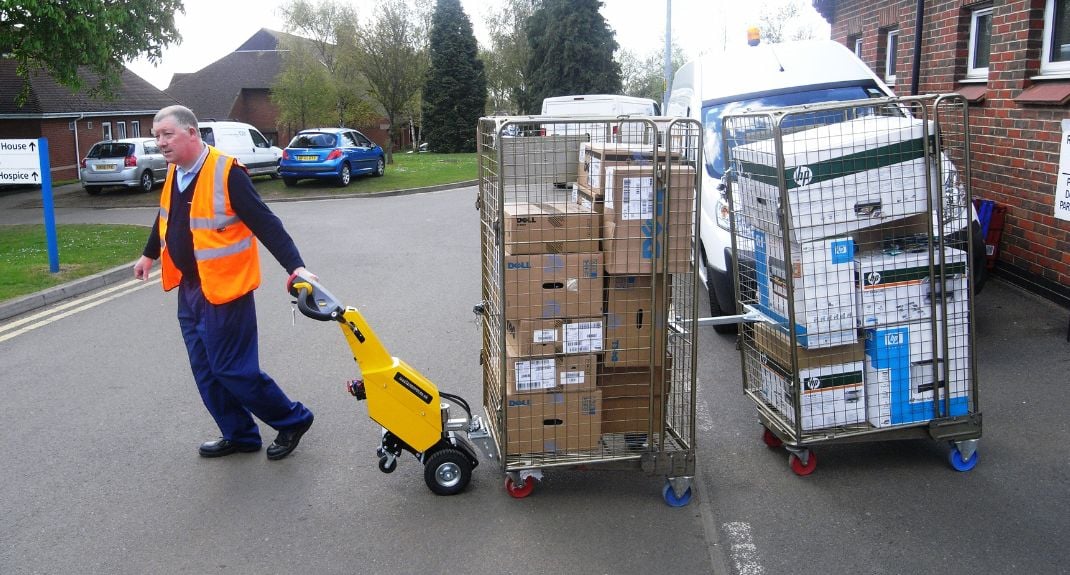
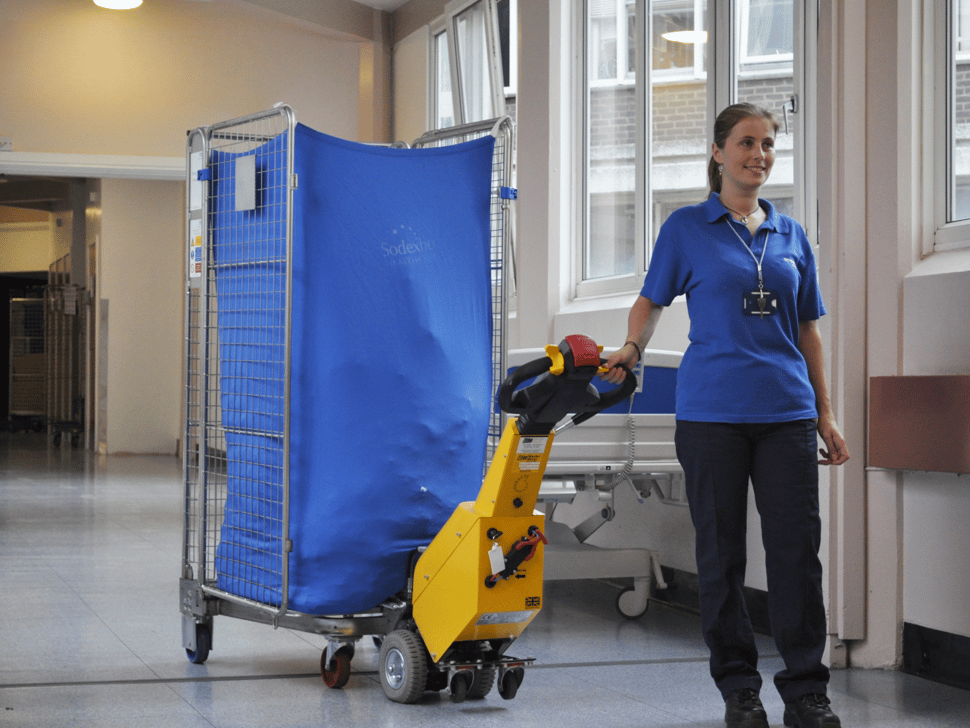
“Prior to purchasing the tugs, our health estate team leaders were given a demonstration of the electric tugsby MasterMover at one of our open days, where various equipment suppliers were exhibiting their products. Our management team could see the benefits immediately and approved the purchase,” states Argyle. But he goes further: “It took only 30 minutes for our team leaders to train staff in how to use the SmartMover. The machine has also proven to be very reliable. I would therefore recommend the machine to other hospitals. In fact, any hospital that is considering buying one of these machines is welcome to visit us to see for themselves the benefits these machines are bringing to Nottingham University Hospitals NHS Trust.”
The Results & Benefits
Where the load is relatively light and where manoeuvrability, safety and control are critical, the SmartMover can add real value to a business. It can ensure the timely delivery of components to a hospital ward, for example, or it can eliminate the need for time-consuming, manual handling. The SmartMover LM100 connects to the base of the wheeled load via an innovative clamping mechanism, which is operated by using a simple lever located on the neck of the device. Once connected, the machine is secured to the load and the operator can use the ‘forward’ and ‘reverse’ controls.
The machine is also very easy-to-use. A simple throttle paddle on the headset enables the user to constantly vary the speed according to the conditions. There is also a twin speed button that enables the operator to place a cap on the speed, which is useful for busy healthcare environments. Amongst other built-in safety features is an anti-crush button that ensures that the user cannot become trapped between the machine and an immoveable object. The device has an electro-magnetic brake, which is constantly engaged until the operator applies power via the throttle. The unit can be steered on either side, enabling easy turning in tight spaces. When off load, the device travels on the support wheels for maximum operator comfort.
At Nottingham University Hospitals, the electric tugs support the hospital’s new accident and injury procedures. This system records all accidents, injuries (including repetitive strain injuries) and ‘near misses’ occurring on the hospital premises. As Argyle explains: “If staff have an accident, they have to record it using their own personal ID swipe card. If the card logs five or more incidents in a given time period, then extra training is provided to correct that issue. Similarly, the accident could be due to a fault with a machine or poor design. The machine may then need to be reviewed or replaced completely by a safer alternative model. I’m pleased to say there have been no recorded accidents or injuries with the tug.”